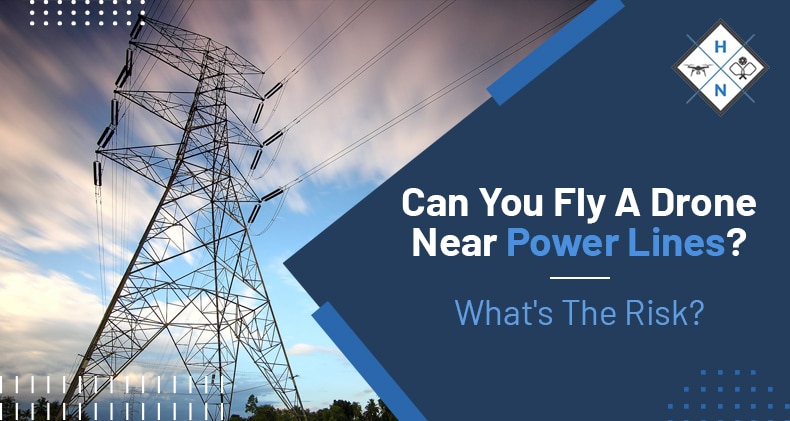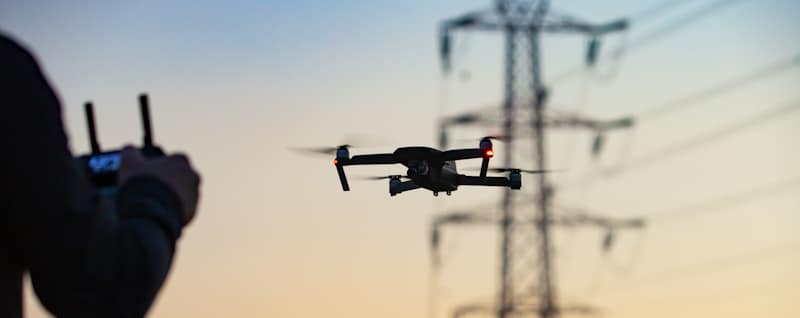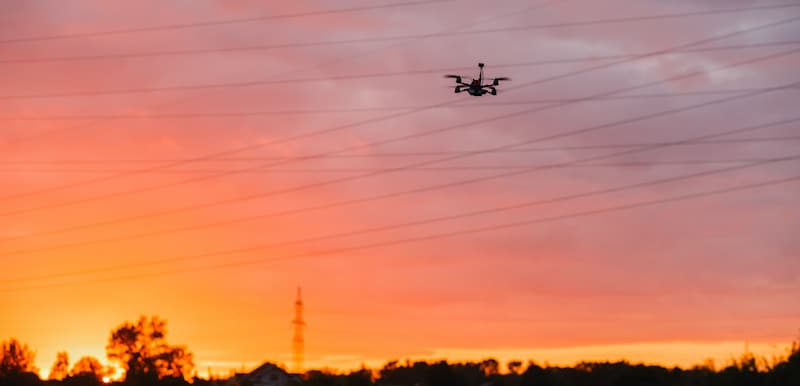Flying a drone is a lot of fun until you run into some trouble. We think that flying an object in the sky will be safe because no cars are coming from all directions, well, at least until flying cars have not become a reality. But many things need your attention while flying a drone out in the open. While things like trees and buildings can only cause damage to your drone, squabbling with power lines is an entirely different story.
Flying a drone near power lines can disrupt the signal between the drone's receiver and controller. The electrical current will damage the drone, also leading to a power line failure. The electrical current in the power lines can mess up the drone's internal system, causing navigation issues.
Risks To Flying Drones Near The Power Lines
In 2015, a drone caused an electricity blackout in West Hollywood, California. In another instance, a drone crashed into a high-voltage wire, which led to damages of tens of thousands of dollars and loss of power for around 1600 people. These two incidents happened 347 miles apart, and still, we can see that the problems caused by the incident are not something that we can avoid.
Here's how one of the eyewitnesses described the incident.
All of a sudden [I saw] a flash – like a boom," said Chris Gordon. "And then sparks, and you could see the drone dropping to the ground.
"It landed right over here in the middle of the intersection, and cars were actually driving around the drone, and it was smoking in the middle of the street."
The purpose of sharing this eyewitness statement is to help you understand three things. One, when the drone struck the wires, there was a flash and a small explosion that made the "boom" sound. The sound alone can be alarming as it can disturb the common folk living or walking nearby the site zero and cause a panic outbreak.
Second, there were sparks due to the explosion, which can become significant if they cause a fire. Imagine a drone striking electrical wires in an area with abundant amounts of dry wood that can easily catch fire from a simple spark.
The third aspect of this incident is that the drone crashed and burned in the middle of the road. What if it had landed on a person crossing from below the wires? Fortunately, no one was injured in any of the two incidents reported above, but we cannot ignore the risks.
Wireless Connectivity Between Drone and Controller via Radio Frequency
A wireless connection exists between the drone and its remote control. Technically, this wireless connection comprises radio frequency that establishes a communication channel. Just like it is with any other wireless communication channels, both the devices should be on the same frequency to work together.
Radio-frequency signals are omnipresent. In other words, billions of devices across the globe are using radio frequency signals in the electromagnetic spectrum to communicate. But if all the devices run on the same type of signal, how can one remote control a single drone and not others.
This is because every remote control device built to navigate a drone is fitted with a unique identification code. This code helps identify the transmission of one particular radio frequency, matching it with the drone's frequency. This pairing is facilitated with RFID or Radio Frequency Identification. The drone received is fed with the RFID information so that when the messages are relayed from the controller to the drone receiver, the same is accepted without delay.
The majority of the drones built for recreational and commercial purposes use 900 Mhz frequency for transmission. Yes, some frequencies are much higher than this range, but lower frequency transmission has greater strength and range for controlling the drone. Although, lower frequency transmission also means that the drones need a larger antenna to receive the same.
What Happens When a Drone Flies By a Power line?
After knowing how a drone and remote control connects with each other, we can better understand the issues caused by power lines. Power lines interrupt the communication between a drone receiver and the controller. In technical terms, this interference is called power line noise.
Power line noise can interfere with radio communication and broadcasting signals. The electricity lines generate unwanted radio signals that can override the existing transmission or compete with them. Due to this, the transmission strength between the drone controller and receiver diminishes, leading to navigation issues causing accidents, crashes, and other associated problems.
Recommendations for Flying Drones Near Power Lines
We have already established that flying a drone near power lines is a risky thing to do. Be it for recreational or commercial purposes; it is imperative to take care of a few things.
- Whenever you fly a drone with power lines in the vicinity, keep a distance of around 400 feet from the wires. Getting too close to them will cause interference and damage the flight path.
- At all times, your drone must be in your field-of-vision. The reason being, the electrical wires may not be visible via the drone's camera. Inability to see the wires from the drone's camera can lead to an accident. But when you have the drone in your field of vision, you can better observe the wires take the right action at the right time.
- In case the drone has come in contact with the high-tension wires and falls down on the ground, do not attempt to pick it up. Going near the wires at a time when an object has struck them is unsafe.
- While you are flying the drone with electrical wires in the vicinity, choose a location from where the background of wires does not camouflage the cables.
Newer drone models are equipped with peripherals to warn the drone pilot about the wires and other electrical objects that can interfere with the signal. Not all the drones that you can buy will have the same functionality; in that case, you have to rely more on your piloting skills than the advanced features.
Drones Used For Power Line Inspections
Using drones for commercial purposes saves time and cost. For instance, using drones for transmission tower inspection can cut the cost by $200 to $5000. However, doing so involves a greater risk especially, if the drones are operated by amateur and inadequately trained drone pilots. Drones have been used for several purposes, including some complex and highly-intricate tasks, including optical gas imaging and flying LiDAR.
There are professional vendors who are using drones to inspect power lines on a commercial scale. More importantly, drones are utilized to check the power lines for bird nests, rust, corrosion, and damaged bolts. The inspection-ready drones are wary of the power lines, and they take into account the extent of interference emitted by them. Due to this, they are able to affix the requisite equipment for taking the pictures and inspect the entire area without causing any accidents.
The string of benefits accrued by using drones for power line inspection includes:
- Faster Operation: Drones can reach the power line tops and poles quickly. These unmanned flying machines are able to map out the area quickly.
- Territory Coverage: Compared to a lineman climbing up the pole and walking on wires, a drone can cover more territory. Not only are they lightweight and agile, but drones are also better at this job than other aerial vehicles.
- No Danger to Humans: Except for the part where the drones do not touch the wires, there is no danger to humans in using them for inspection. Actually, drones can be taken as a standard for human safety in power line inspection.
- Efficient Scanning: Drones built for commercial purposes like inspections and scanning as they can process complex data and plan out the most suitable routes for the inspection.
- More Frequent Inspections: A person would only climb to inspect the power line if it is necessary. But with drones, we can conduct regular inspections and keep a better watch on the power lines ensuring better maintenance and upkeep.
Using drones for power line inspection directly translates to keeping the man away from dangers and increasing the work efficiency. Areas reeling from climatic anomalies like a fire or storm pose a risk to technicians wanting to inspect the power lines before the electricity supply regains. But the same if done with drones is better and safer.
Conclusion
Flying a drone near the power lines involves risk, especially if you have not accounted for the electromagnetic interference disrupting the radio signals between the drone controller and receiver. Recreational drones are at a higher risk of damage and causing further damage than commercial ones as the former are built to withstand unwanted incidents.
While drones can be used for productive and easy power line inspection, the same must be done with the right standard of drones built for commercial purposes and fitted with advanced inspection-ready equipment.
Shawn Manaher loves to play with new toys and dive into new hobbies. As a serial entrepreneur, work definitely comes first but there is always room for hobbies.




